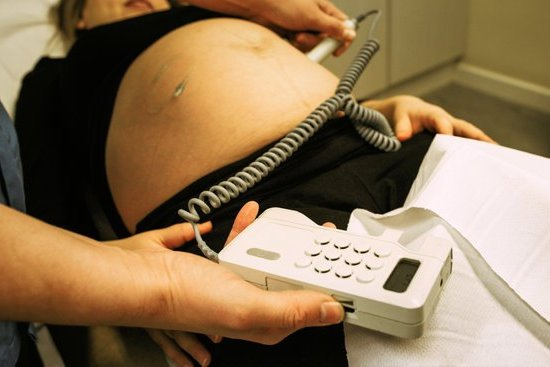Many women experience discomfort or pain during ovulation, which can impact their fertility and chances of conceiving. Ovulation pain, also known as mittelschmerz, is a common occurrence that occurs mid-cycle when the ovaries release an egg. Understanding the relationship between ovulation pain and pregnancy success is crucial for women who are trying to conceive.
Ovulation is a crucial part of the menstrual cycle, marking the fertile window when conception is most likely to occur. This process involves the release of an egg from one of the ovaries, which can cause physical sensations in some women. These symptoms may vary from sharp, sudden pain to dull achiness or cramp-like discomfort. It’s essential for women to recognize and understand these signs as they can serve as indicators of their fertility and ovulation.
Research has shown that ovulation pain can provide valuable insight into a woman’s reproductive health and her likelihood of conceiving. Understanding the different types of ovulation pain and their significance can help women better track their menstrual cycle and improve their chances of successful pregnancy. In addition, recognizing ovulation pain can also prompt women to seek medical advice if they encounter any concerning red flags during this time in their cycle.
Understanding the Menstrual Cycle
The menstrual cycle is a complex process that occurs in women of reproductive age, involving various hormonal changes and physiological events. At the center of this process is ovulation, which plays a crucial role in fertility and the ability to conceive. Understanding the menstrual cycle and the role of ovulation in this process is essential for women who are trying to conceive or simply want to become more knowledgeable about their reproductive health.
What Is Ovulation?
Ovulation is the release of a mature egg from the ovary, which typically occurs around midway through the menstrual cycle. This event is triggered by a surge in luteinizing hormone (LH) and leads to the egg being released into the fallopian tube, where it may be fertilized by sperm. If fertilization does not occur, the egg eventually disintegrates, leading to menstruation.
Significance of Ovulation in Fertility
Ovulation is crucial for fertility because it represents the window of time during which an egg can be fertilized by sperm. For women who are trying to conceive, understanding when they ovulate can help them identify their most fertile days and increase their chances of becoming pregnant. This is why tracking ovulation patterns and being aware of any associated symptoms, such as ovulation pain, can be valuable tools for those trying to start a family.
Ovulation Pain as an Indicator of Fertility
Some women experience discomfort or pain during ovulation, known as mittelschmerz. This can manifest as sharp or cramp-like pelvic pain on one side of the abdomen, corresponding to the ovary that has released an egg. While not all women experience ovulation pain, for those who do, it may serve as a helpful indicator of when they are most fertile.
Research suggests that experiencing ovulation pain may actually be associated with increased fertility and higher chances of pregnancy success. Some studies have found that women who report experiencing ovulation pain have greater odds of achieving conception compared to those who do not report this symptom. Thus, paying attention to and recognizing ovulation pain can potentially aid in determining optimal timing for intercourse when trying to conceive.
Overall, having a comprehensive understanding of how ovulation fits into the menstrual cycle and its significance for fertility can empower individuals with knowledge about their reproductive health. Whether someone is actively trying to conceive or simply wants to comprehend their body’s natural processes better, knowing about ovulation is valuable information that can impact one’s overall well-being.
Types of Ovulation Pain
Ovulation pain, also known as mittelschmerz, is a common phenomenon experienced by many women during their menstrual cycle. It is characterized by a mild to moderate discomfort or pain in the lower abdomen, usually on one side. This occurs due to the release of an egg from the ovary, which can cause irritation and minor bleeding.
Understanding the menstrual cycle is crucial in understanding the role of ovulation pain. Ovulation is a key event in the menstrual cycle where a mature egg is released from the ovary and moves into the fallopian tube, making it available for fertilization. Ovulation typically occurs around 14 days before the start of your next period, although this can vary depending on the individual’s cycle length.
There are different types of ovulation pain that women may experience. Some describe it as sharp and sudden, while others experience a dull ache or cramp-like sensation. The significance of these different types of pain can vary from person to person. For some women, ovulation pain may be barely noticeable, while for others it can be quite intense. However, experiencing ovulation pain – regardless of its type – does not necessarily indicate any issues with fertility or pregnancy success.
It is important to remember that while ovulation pain can sometimes be an indicator of fertility and timing for conception, it is not a foolproof method for predicting ovulation or ensuring pregnancy success. Some research suggests that women who experience ovulation pain may have increased chances of conceiving due to heightened awareness of their fertility signs and timing intercourse accordingly. However, more studies are needed to fully understand the link between ovulation pain and pregnancy success.
| Information | Data |
|---|---|
| Common Type of Pain | Dull ache or cramp-like sensation |
| Frequency | Experienced by many women during their menstrual cycle |
| Significance | Varies from person to person; not necessarily an indicator of infertility or pregnancy success |
How Ovulation Pain Can Be an Indicator of Fertility
Ovulation pain, also known as mittelschmerz, can actually be a positive sign for women trying to conceive. This type of pain occurs during ovulation and is typically felt on one side of the lower abdomen. It is often described as a sharp or cramp-like sensation and can last from a few minutes to a few hours. Understanding ovulation pain and its connection to fertility can provide valuable insights for women who are actively trying to get pregnant.
Significance of Ovulation Pain
Experiencing ovulation pain can indicate that a woman is indeed ovulating, which is an essential part of the menstrual cycle that occurs mid-cycle. For women with regular periods, ovulation generally happens around day 14 of their cycle. The presence of ovulation pain confirms that the release of an egg from the ovary is taking place, giving a woman an increased chance of conceiving if she has intercourse around this time.
Ovulation Pain as a Fertility Indicator
For couples attempting to conceive, understanding when ovulation occurs is crucial. Ovulation pain can serve as a useful indicator for timing intercourse to maximize the chances of pregnancy. By tracking and recognizing the signs of ovulation pain, couples can identify the most fertile window in a woman’s cycle and plan accordingly to increase their likelihood of success.
Research has suggested that women who experience ovulation pain may have higher pregnancy rates compared to those who do not. While further studies are needed to confirm this link, many anecdotal accounts from women who have conceived attest to the correlation between ovulation pain and pregnancy success. This serves as encouraging news for women experiencing mittelschmerz while trying to conceive.
Tips for Managing and Alleviating Ovulation Pain
Ovulation pain, also known as mittelschmerz, is a common occurrence for many women during their menstrual cycle. This discomfort is typically felt on one side of the lower abdomen and can range from mild to severe. While the exact cause of ovulation pain is not fully understood, it is believed to be due to the stretching of the ovary or the release of blood and fluid when the egg is released.
When it comes to managing and alleviating ovulation pain, there are a few strategies that women can try. One method is using over-the-counter pain relievers such as ibuprofen or acetaminophen to help reduce discomfort. Applying heat to the lower abdominal area with a heating pad or warm bath can also provide relief. Some women may find comfort in using relaxation techniques such as deep breathing exercises or gentle stretching.
Additionally, paying attention to your body’s signals and tracking your menstrual cycle can help you anticipate when ovulation pain may occur. By staying attuned to your body’s natural rhythm, you can better prepare for any discomfort that may arise during ovulation.
According to a study published in the journal Human Reproduction, researchers found that women who experienced ovulation pain were more likely to conceive compared to those who did not report experiencing any discomfort during ovulation. The study suggests that these sensations may serve as an indicator of fertility, although further research is needed to confirm this correlation. Nonetheless, for some women, recognizing ovulation pain could potentially signal an optimal time for conception.
| Tips for Managing Ovulation Pain | Benefits |
|---|---|
| Use of over-the-counter pain relievers | Reduces discomfort |
| Application of heat | Provides relief |
| Relaxation techniques | Eases tension and stress associated with ovulation pain |
The Link Between Ovulation Pain and Pregnancy Success
Ovulation pain, also known as mittelschmerz, is a common phenomenon experienced by many women during their menstrual cycle. This sharp or cramp-like discomfort occurs in the lower abdomen and is often associated with the release of an egg from the ovary. While ovulation pain can be bothersome for some women, research has shown that it may actually be a positive indicator of fertility and pregnancy success.
One study published in the journal Human Reproduction found that women who experienced ovulation pain were more likely to conceive compared to those who did not report any discomfort during this time of their cycle. The researchers believe that ovulation pain could serve as a sign of a healthy, regular menstrual cycle and a strong likelihood of successful conception.
Furthermore, another study conducted at the University of Kentucky found that women who reported experiencing ovulation pain had higher levels of certain hormones that are crucial for fertility and reproductive health. These findings suggest that there may be a biological connection between ovulation pain and increased chances of pregnancy success.
In addition to these research studies, many gynecologists and fertility specialists have observed a correlation between ovulation pain and successful pregnancies in their patients. While more research is needed to fully understand the mechanism behind this link, these findings offer hope to women who experience ovulation pain and are trying to conceive.
Real-Life Success Stories
Many women experience ovulation pain, also known as mittelschmerz, during their menstrual cycle. This discomfort can range from a mild twinge to more severe cramping and typically occurs around the middle of the cycle when an egg is released from the ovary. While ovulation pain is often seen as a nuisance, it can actually be a positive sign for fertility.
Some women report feeling a sharp or dull sensation on one side of their lower abdomen, while others describe it as similar to menstrual cramps. Despite the varying types of ovulation pain, it is considered a normal part of the menstrual cycle for many women.
For some individuals, ovulation pain can serve as an indicator of fertility and increase their chances of successful conception. When experiencing ovulation pain, this suggests that an egg has been released and is ready to be fertilized. This provides valuable information for couples who are trying to conceive by pinpointing the most fertile time in the woman’s cycle. Understanding and tracking ovulation pain can aid in determining optimal timing for intercourse and increasing the likelihood of pregnancy success.
Additionally, research has shown a connection between experiencing ovulation pain and increased pregnancy success rates. A study published in The Journal of Reproductive Medicine found that women who reported feeling mittelschmerz were more likely to achieve successful pregnancies compared to those who did not experience any ovulation pain. This highlights the significance of paying attention to one’s body and understanding the potential link between ovulation pain and fertility.
When to Seek Medical Advice for Ovulation Pain
Many women experience some level of discomfort during ovulation, which may include ovulation pain. However, it’s important to be able to distinguish between normal ovulation pain and symptoms that require medical attention. Here are some red flags to watch out for when experiencing ovulation pain:
1. Severe or sudden onset of pain: While some mild discomfort is considered normal during ovulation, severe or sudden pain should not be ignored. This could be a sign of a more serious underlying condition such as ovarian cysts, endometriosis, or pelvic inflammatory disease.
2. Pain lasting longer than a few days: Ovulation pain typically lasts for just a day or two for most women. If the pain persists for longer than this, it could be indicative of an issue that requires medical attention.
3. Accompanying symptoms: If the ovulation pain is accompanied by symptoms such as heavy bleeding, fever, nausea, vomiting, or difficulty breathing, it is important to seek medical advice immediately.
It’s essential to pay attention to your body and recognize any abnormal changes in your ovulation pain pattern. Keeping track of your menstrual cycle and noting any unusual symptoms can help you communicate effectively with healthcare providers if and when you need to seek medical attention for ovulation pain.
Being proactive about seeking medical advice can contribute to better understanding and managing potential reproductive health issues and ultimately improve your chances of pregnancy success if fertility concerns are addressed promptly and effectively.
Conclusion
In conclusion, ovulation pain can play a significant role in a woman’s fertility and pregnancy success. Understanding the nature of ovulation pain, its occurrence during the menstrual cycle, and its various types is crucial in identifying potential indicators of fertility. Many women experience different types of ovulation pain, such as sharp, dull, or cramp-like sensations, which can be useful in determining the most fertile period in their cycle.
Research has suggested that women who experience ovulation pain may have a higher chance of conceiving compared to those who do not. This is an important factor for couples trying to conceive, as it provides valuable insight into the window of fertility. Real-life success stories also highlight how some women have used ovulation pain as an indicator of their most fertile days and ultimately achieved pregnancy.
However, it is important to note that while ovulation pain can be a natural part of the menstrual cycle, there are instances where it may be indicative of underlying health issues. It is essential for women to pay attention to any unusual or severe ovulation pain and seek medical advice if necessary. Consulting a healthcare provider can help rule out any potential concerns and ensure overall reproductive health.
In summary, recognizing and understanding ovulation pain can be beneficial for women who are trying to conceive. By being aware of this aspect of their cycle and paying attention to any changes or discomfort, women can maximize their chances of fertility and pregnancy success. Ultimately, while experiencing ovulation pain does not guarantee conception, it can serve as a helpful tool in navigating the journey towards growing a family.
Frequently Asked Questions
Does Ovulation Pain Mean Pregnancy Success?
Ovulation pain, or mittelschmerz, is not a definitive sign of pregnancy success. It simply indicates that ovulation has occurred and does not guarantee fertilization or implantation of the egg.
Is It Too Late to Conceive When You Feel Ovulation Pain?
Feeling ovulation pain does not necessarily mean it’s too late to conceive, but it does indicate that ovulation has already taken place. It’s still possible to conceive within 24 hours after experiencing ovulation pain.
How Long After Ovulation Pain Can Egg Be Fertilized?
After ovulation pain occurs, the egg can be fertilized within 12-24 hours. Sperm can survive in the female reproductive tract for up to 5 days, so timing intercourse closer to ovulation increases the chances of fertilization and conception.

Welcome to my fertility blog. This is a space where I will be sharing my experiences as I navigate through the world of fertility treatments, as well as provide information and resources about fertility and pregnancy.





